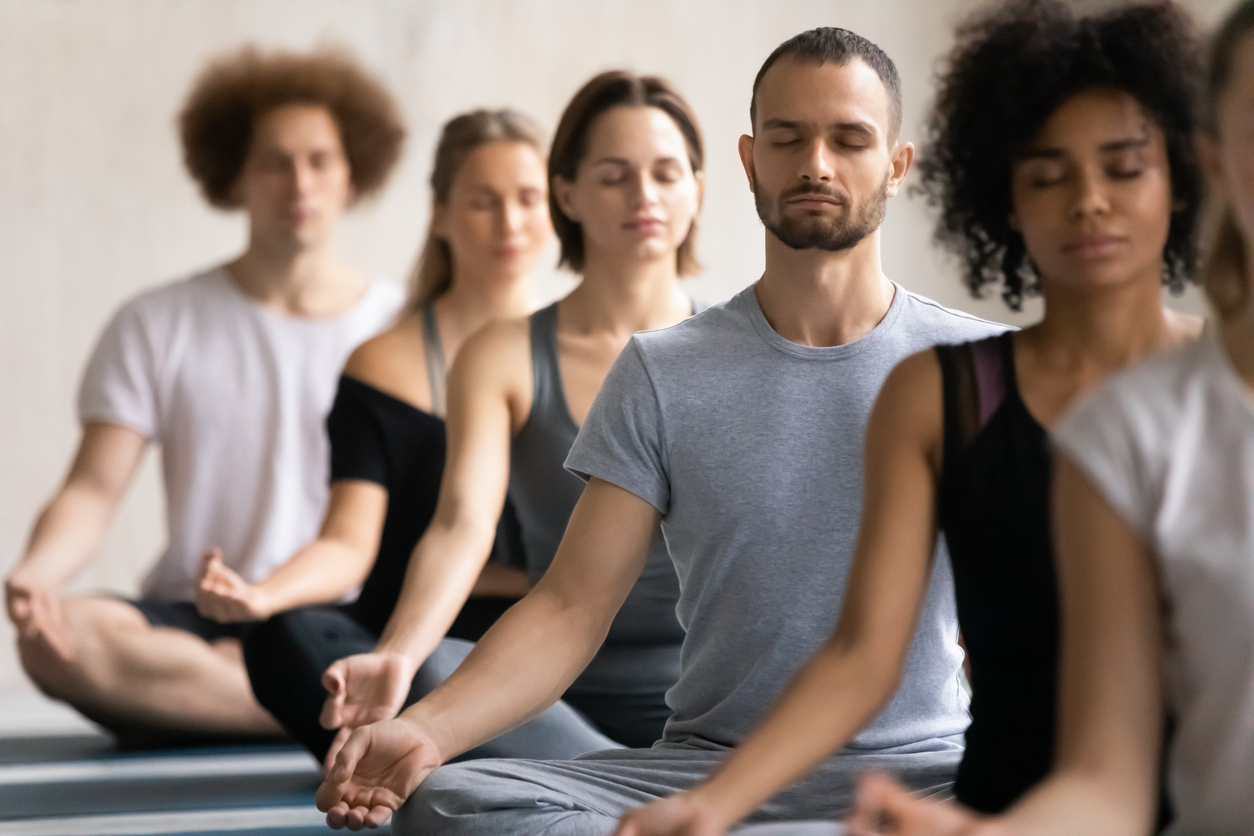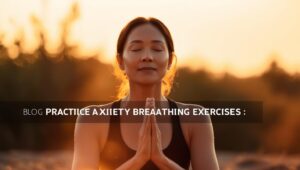Yoga for Anxiety

Yoga for Anxiety
Yoga for Anxiety, Yoga is a great relief to feel anxious, but fear is a part of life and some of us are more afraid than others. No matter how many years you practice yoga, you are still human. You need to feel feelings of frustration, distress, irritation, and fear. Most people think that yoga will make these negative feelings disappear, but that’s not quite right. Some people think that yoga will help them throw negative feelings into separate compartments, but that’s not quite the case. How do yoga practitioners alleviate their long-term anxiety? They seem so calm and quiet all the time. What is the big secret? Let’s first look at some options that you should never practice, and then at the Yogic solutions to solve fear.
Myth 1: Yoga can make fear disappear
Never think that fear will magically disappear. Yoga and medical prescriptions cannot make fear disappear forever. For fear to disappear, something must change in you. List the causes of your anxiety and how you react to it. Then find solutions to clean them healthily. Yoga helps, but yoga also has its limits.
Accept and define fear as it is. They also have to deal with hatred, jealousy, greed, and anger in life. We should not accept any negative thoughts or feelings, but we should be able to quickly identify you and your personal calendar. Life is much easier if we are honest with ourselves. Once we have found the true nature of the problem, we can find real solutions to combat our negative feelings. When you wake up feeling a little depressed, don’t waste your time denying it, but find a solution to eliminate the negativity from within.
Myth 2: Yoga can “hold back” their feelings
Keeping the emotions inside will always cause harm to the person. You cannot stop an earthquake with a landfill. It is not allowed to go with rude gestures, “scolding everyone” or “approving anger at the wheel”, but there are healthy ways to “let off steam”.” the secret to controlling emotions is to reject anger, but it will take a lot of time and conditioning before you can do it.
Yoga is actually an archive of solutions for anxiety, but you need to be prepared to maintain the regular practice for complete mental, emotional, physical, and mental health.
Practice Yoga for Anxiety Relief
Can yoga have all the answers to fear? Why do fear, stress, and unhappiness invade the lives of many people? If you hear” Thomas who doubts”, nothing works, but you will see some solutions when you read below.
In fact, all forms of yoga are good for our mental health. This does not mean that fear disappears, but yoga gives us the tools to put fear in the “back seat” while defining a positive direction in life. The struggle for leadership is in our minds. We must be aware of the struggle from within.
Pessimistic thinking is not productive, but many pessimists are driven by the “dark side”. Nothing will work for you, because you already have a “why me” attitude. Everyone is against you, or you think, and that’s the problem.
If you do not control your thinking, you will not suppress negative thoughts. How does yoga do that? The principle is simple. We will use the jargon of the 21st century to give you a clear picture. Yoga is a science of the old, but ever-changing life. The yoga practitioner “programs” his thoughts. Your mind is your best friend and your worst enemy at the same time.
If you regularly attend yoga classes led by a competent yoga teacher, your body and mind are charged with positive energy. Look at the facial expressions of yoga students after class, you will find that they are in a state of happiness. If not, you haven’t found the right place yet. No need to get tired.
Chair Yoga for Anxiety
Yoga is much more than just an exercise. However, yoga has gained popularity as an exercise of choice when it comes to relaxation for the mind and body. However, many people looking for relief from anxiety are intimidated by the prospect of finding themselves in positions similar to a pretzel. For people with anxiety, yoga on a chair can be the solution.
The yoga chair is fully accessible and protected from the common stereotypes of yoga. The prospect of having a chair available for support gives even the most impatient students the advantage of having a sense of control. The chair offers the promise of constant stability and grounding during training, and that is exactly what a fearful person really needs.
Learning asanas and breathing on a chair during yoga can also be a powerful tool to prevent anxiety and stress outside of class. One of the scariest things about a panic attack is feeling helpless to stop it. Many of the techniques students learn when practicing yoga on a chair can be done at the beginning of a panic attack, reducing both the duration and severity.
Common Triggers
This is especially valuable, as one of the most common triggers of anxiety attacks is the fear of the attack itself. Yoga on a chair is also a style of choice to reduce the anxiety of people with physical limitations and disabilities. Those who sit in wheelchairs will benefit from learning the asanas that they can easily perform while sitting. For them, the use of a chair for the basic support of yoga provides a convenient method to spend excessive energy; this, in turn, reduces the level of anxiety.
Yoga on a chair is a safer and more comfortable option for people with emotional damage, which is often associated with anxiety. Breathing techniques (pranayama) and deep relaxation in themselves can put a person into a deep state of inner peace.
The bottom line is that most people feel good after exercise; this makes us feel alive. There is nothing better for mood or mental health than to use our body properly. The yoga chair provides a unique opportunity for people to naturally improve their mood and brain function. By practicing yoga in this way, practitioners can reduce or eliminate fear in the future.
Yoga relaxation for anxiety attacks
Sometimes anxiety attacks are the most intense forms of suffering that the mind can cause the body. Anxiety attacks can vary in severity, from confusion, dizziness, and nausea, at one end of the spectrum, to feeling a heart attack, at the other. This intense and extreme suffering can be crippling if you distract people from the beautiful life they should lead and keep them in the trap of fear. Fortunately, some methods can keep anxiety under control.
The first step is to conscientiously practice yoga every day before the anxiety attacks can begin. Hatha yoga is an excellent choice because it concentrates on postures that relieve muscle tension, meditation to focus the mind, and deep breathing techniques (pranayama) to control the cardiovascular system.
Those who suffer from anxiety attacks often tend to breathe very shallowly during an asthma attack. However, it is unclear whether it is standard behavior, a seizure trigger, or a symptom of the anxiety disorder itself. The practice of yoga, as long as everything is calm, serves to plant those who suffer from anxiety and helps to avoid anxiety attacks until the end of the day.
If an anxiety attack worsens, instinctively resist and fight it. If possible, control your breathing and try to remain conscious during the attack. Mindfulness will be easier if yoga is already practiced daily. Try to be an observer of fear, pain, and fear. Do your best not to be swept by a wave of horror.
This will seem deeply scary at first, and it may take more than a few attempts to do so successfully. When sensational progress is finally achieved and the practice of conscious consciousness becomes their true nature, they will rationally observe fear and anxiety without judging. Fear is exactly what is here now. All bouts of anxiety happen and this will be no exception. Learn to fully accept the attack, but control your breathing throughout the experience.
As soon as an attack of fear is observed and accepted, several different things happen. First, the strength of fear on a person is significantly reduced, as anxiety attacks receive a great boost from the victim’s negative reaction to an imminent attack.
Secondly, if the observing consciousness is successfully transferred to the attack, stability and forgiveness are the results. It is easy to maintain latent anger towards yourself or others through extreme stress, but it does not help the situation to happen at all.
Anxiety and stress attacks should not allow anyone to be deprived of the joy of being. Viewing extremely stressful attacks as opportunities for inner transformation and growth can lead to positive mental states, which can then lead to the complete elimination of the problem.
Teachers should design yoga workshops for stress or weekly classes for anxiety, depending on local demand. Many relaxation techniques learned during the training of intensive yoga teachers should be available to students who have experienced chronic stress conditions. In fact, it is really a matter of life and death.




